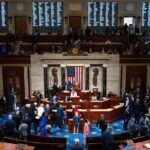
Heading into today's OPEC+ meeting, what was supposed to be a boring affair where oil producers were to boost output by the now accepted 432K, has become modestly exciting following i) an overnight report from the FT that Saudi Arabia has reportedly hinted that it is prepared to pump more oil if Russia's output declines substantially due to sanctions according to sources (the sources added that Riyadh would "eventually" respond "should" a supply crunch hit) and ii) a Reuters headline that OPEC+ is likely to agree an output hike in the range of 600kbpd for July, up from the 432K expected, and bring up the timetable for cuts easing, currently due to the end by September. And while the FT news initially depressed Brent, which traded north of $120 yesterday and has since slumped briefly below $112, it has rebounded powerfully - and unexpectedly - on the latest Reuters report:
Oil just ran $2 on this news. In bull mkts, they cannot break it and instead rally on bearish news… https://t.co/VfMWee9RIR
— Kuppy (@hkuppy) June 2, 2022
Courtesy of NewsSquawk here are some of the other key news heading into today's JMMC and OPEC+ meeting.
- ENERGY INTEL SOURCES: Energy Intel sources said Moscow has made no request for a quota suspension and this is unlikely to gain traction. The desk suggests that an alternative to a continuation of the usual pact would be to increase the monthly increment. This would allow some extra supply in the near term, mainly from Saudi Arabia and the UAE but importantly would also serve to accelerate the process of unwinding Opec-plus production cuts, which is currently scheduled to end in September." The piece adds As this unwinding process comes to an end. this could open the door for Opec-plus members to reassess overall policy and baselines for individual countries — potentially paving the way for bigger supply increases.
- REUTERS SOURCES: Reuters sources said Russia may agree to OPEC+ compensating its current sanctions-induced decline in production. Russian compensation could be approved gradually, and there is no guarantee it will be approved in full on Thursday, but a decision is highly likely.
- WSJ SOURCES: Reports said OPEC members are mulling suspending Russia's participation in the OPEC+ pact (DoC) amid sanctions According to the article exempting Russia from the quotas could pave the way for Saudi and the UAE. alongside other producers to ramp up output in the face of Western pressure Desks have been sceptical about this speculation and have highlighted that the chances of such an exclusion are low given the limited spare capacity (see below) and the political stability between OPEC and Russia That being said. OPEC has previously affirmed a flexible stance and thus there is scope for a surprise on this front Note, the JTC did not discuss an exemption at their meeting.
RUSSIA
DEMAND: Demand for Russian oil particularly from the West, has depleted EU leaders earlier this week agreed on a watered-down version of the original proposal unveiled by the European Commission President in early May The agreement would see a ban on Russian seaborne oil over the next six months, whilst pipeline oil will be temporarily exempted. Hungary would effectively be exempt as it has no seaports Germany and Poland who are both fed by the North Druzhba pipeline agreed to a voluntary phase-out - with the total hit closer to around 90% of Russian flows to the EU. Furthermore eyes have been on nations announcing bans on insurers covering ships carrying Russian oil SGH Macro commented Tuesday on the importance of insurance bans "For those that recall the oil sanctions measures that were taken against Iran the Western ban on insuring tankers carrying Iranian oil was perhaps the single most effective measure in taking a significant part of the Islamic Republic's clandestine oil exports off markets."
SUPPLY: With the West shunning Russian oil. reports have been suggesting that Russia has turned to India and China for discounted oil sales. Refinitiv Eikon data signalled that India has received 34mln barrels of discounted Russian oil since the invasion of Ukraine, whilst reports via the FT last month highlighted Chinese refiners discretely purchasing Russian oil at a steep discount" The IEA in its April Oil Market Report (OMR), forecast the overall decline of Russian supply by 1 6mln BPD in May and 2mln BPD in June and believes this could expand to circa. 3mln BPD from July onwards The agency added that despite sanctions, total Russian oil exports increased MM in April by 620k BPD Russia shut in nearly Imln BPD of oil in April.
OTHER DEMAND FACTORS
CHINA'S COVID CONUNDRUM: China's COVID situation remains somewhat mixed with Shanghai City loosening curbs, but Beijing recently tightening restrictions in certain districts. Severe new lockdown measures amid surging Covid cases in China have led to a downward revision in our expectations for global oil demand in 2022 and for the year as a whole IEA said in its OMR However, with lockdowns in an easing trend and China adopting more economy-boosting stimulus measures, downgrades to growth forecasts could prove to be conservative assuming a more targeted approach to future COVID outbreaks
US DRIVING SEASON: Gasoline prices have been underpinned by seasonal demand from the US driving season - which officially kicked off on US Memorial day - with the average gallon hitting record highs in recent weeks. Desks have now been flagging demand destruction stemming from the high prices CNN last month also reported that the White House is mulling an emergency declaration that would release diesel from a rarely used stockpile.
OTHER SUPPLY FACTORS
OPEC SPARE CAPACITY: Spare capacity has come into focus, with the gap between OPEC* production and quotas rising to a record 2 59mln BPD in April: 13 out of the 19 countries struggled to hit quotas, according to a survey cited by SSP Global Meanwhile Saudi Aramco s CEO last month warned that the world is operating with less than 2% of spare oil capacity. This is arguably the most important supply- side factor as it puts any real OPEC output into question despite quotas.
IRANIAN OIL: There has been no meaningful movement on the Iranian Nuclear Deal since the prior meeting and the US and Iran stick to their guns. However the US has released punchier rhetoric in which the US Special Envoy for Iran warned if Iran continues to make demands on the JCPOA the US will continue to reject them and there will be no agreement, and if there is no deal, then the US is ready to further tighten sanctions and respond strongly to any escalation.
SPR RELEASES: Following the joint SPR releases seen earlier this year, reports via CNN in early May (citing an Energy Department official and later confirmed by the DoE) suggested that the Biden administration plans to seek bids this fall to buy 60mln barrels of crude oil as the first step in a years-long process aimed at replenishing America’s shrinking emergency oil resen/e The article suggested "The first tranche of purchases will cover only one-third ofthat ISOmln-barrel release . Beyond trying to refill a vital rainy fund the Biden administration hopes the buyback plan will encourage domestic oil production by guaranteeing a source of future demand "
BEYOND THE DOC
"When the current pact expires in September the group will decide on a new market management policy depending on the market conditions at the time", according to Energy Intel citing delegates - thus markets could also be on the lookout for further flesh on the bones of this.
Heading into today’s OPEC+ meeting, what was supposed to be a boring affair where oil producers were to boost output by the now accepted 432K, has become modestly exciting following i) an overnight report from the FT that Saudi Arabia has reportedly hinted that it is prepared to pump more oil if Russia’s output declines substantially due to sanctions according to sources (the sources added that Riyadh would “eventually” respond “should” a supply crunch hit) and ii) a Reuters headline that OPEC+ is likely to agree an output hike in the range of 600kbpd for July, up from the 432K expected, and bring up the timetable for cuts easing, currently due to the end by September. And while the FT news initially depressed Brent, which traded north of $120 yesterday and has since slumped briefly below $112, it has rebounded powerfully – and unexpectedly – on the latest Reuters report:
Oil just ran $2 on this news. In bull mkts, they cannot break it and instead rally on bearish news… https://t.co/VfMWee9RIR
— Kuppy (@hkuppy) June 2, 2022
Courtesy of NewsSquawk here are some of the other key news heading into today’s JMMC and OPEC+ meeting.
- ENERGY INTEL SOURCES: Energy Intel sources said Moscow has made no request for a quota suspension and this is unlikely to gain traction. The desk suggests that an alternative to a continuation of the usual pact would be to increase the monthly increment. This would allow some extra supply in the near term, mainly from Saudi Arabia and the UAE but importantly would also serve to accelerate the process of unwinding Opec-plus production cuts, which is currently scheduled to end in September.” The piece adds As this unwinding process comes to an end. this could open the door for Opec-plus members to reassess overall policy and baselines for individual countries — potentially paving the way for bigger supply increases.
- REUTERS SOURCES: Reuters sources said Russia may agree to OPEC+ compensating its current sanctions-induced decline in production. Russian compensation could be approved gradually, and there is no guarantee it will be approved in full on Thursday, but a decision is highly likely.
- WSJ SOURCES: Reports said OPEC members are mulling suspending Russia’s participation in the OPEC+ pact (DoC) amid sanctions According to the article exempting Russia from the quotas could pave the way for Saudi and the UAE. alongside other producers to ramp up output in the face of Western pressure Desks have been sceptical about this speculation and have highlighted that the chances of such an exclusion are low given the limited spare capacity (see below) and the political stability between OPEC and Russia That being said. OPEC has previously affirmed a flexible stance and thus there is scope for a surprise on this front Note, the JTC did not discuss an exemption at their meeting.
RUSSIA
DEMAND: Demand for Russian oil particularly from the West, has depleted EU leaders earlier this week agreed on a watered-down version of the original proposal unveiled by the European Commission President in early May The agreement would see a ban on Russian seaborne oil over the next six months, whilst pipeline oil will be temporarily exempted. Hungary would effectively be exempt as it has no seaports Germany and Poland who are both fed by the North Druzhba pipeline agreed to a voluntary phase-out – with the total hit closer to around 90% of Russian flows to the EU. Furthermore eyes have been on nations announcing bans on insurers covering ships carrying Russian oil SGH Macro commented Tuesday on the importance of insurance bans “For those that recall the oil sanctions measures that were taken against Iran the Western ban on insuring tankers carrying Iranian oil was perhaps the single most effective measure in taking a significant part of the Islamic Republic’s clandestine oil exports off markets.”
SUPPLY: With the West shunning Russian oil. reports have been suggesting that Russia has turned to India and China for discounted oil sales. Refinitiv Eikon data signalled that India has received 34mln barrels of discounted Russian oil since the invasion of Ukraine, whilst reports via the FT last month highlighted Chinese refiners discretely purchasing Russian oil at a steep discount” The IEA in its April Oil Market Report (OMR), forecast the overall decline of Russian supply by 1 6mln BPD in May and 2mln BPD in June and believes this could expand to circa. 3mln BPD from July onwards The agency added that despite sanctions, total Russian oil exports increased MM in April by 620k BPD Russia shut in nearly Imln BPD of oil in April.
OTHER DEMAND FACTORS
CHINA’S COVID CONUNDRUM: China’s COVID situation remains somewhat mixed with Shanghai City loosening curbs, but Beijing recently tightening restrictions in certain districts. Severe new lockdown measures amid surging Covid cases in China have led to a downward revision in our expectations for global oil demand in 2022 and for the year as a whole IEA said in its OMR However, with lockdowns in an easing trend and China adopting more economy-boosting stimulus measures, downgrades to growth forecasts could prove to be conservative assuming a more targeted approach to future COVID outbreaks
US DRIVING SEASON: Gasoline prices have been underpinned by seasonal demand from the US driving season – which officially kicked off on US Memorial day – with the average gallon hitting record highs in recent weeks. Desks have now been flagging demand destruction stemming from the high prices CNN last month also reported that the White House is mulling an emergency declaration that would release diesel from a rarely used stockpile.
OTHER SUPPLY FACTORS
OPEC SPARE CAPACITY: Spare capacity has come into focus, with the gap between OPEC* production and quotas rising to a record 2 59mln BPD in April: 13 out of the 19 countries struggled to hit quotas, according to a survey cited by SSP Global Meanwhile Saudi Aramco s CEO last month warned that the world is operating with less than 2% of spare oil capacity. This is arguably the most important supply- side factor as it puts any real OPEC output into question despite quotas.
IRANIAN OIL: There has been no meaningful movement on the Iranian Nuclear Deal since the prior meeting and the US and Iran stick to their guns. However the US has released punchier rhetoric in which the US Special Envoy for Iran warned if Iran continues to make demands on the JCPOA the US will continue to reject them and there will be no agreement, and if there is no deal, then the US is ready to further tighten sanctions and respond strongly to any escalation.
SPR RELEASES: Following the joint SPR releases seen earlier this year, reports via CNN in early May (citing an Energy Department official and later confirmed by the DoE) suggested that the Biden administration plans to seek bids this fall to buy 60mln barrels of crude oil as the first step in a years-long process aimed at replenishing America’s shrinking emergency oil resen/e The article suggested “The first tranche of purchases will cover only one-third ofthat ISOmln-barrel release . Beyond trying to refill a vital rainy fund the Biden administration hopes the buyback plan will encourage domestic oil production by guaranteeing a source of future demand “
BEYOND THE DOC
“When the current pact expires in September the group will decide on a new market management policy depending on the market conditions at the time”, according to Energy Intel citing delegates – thus markets could also be on the lookout for further flesh on the bones of this.





